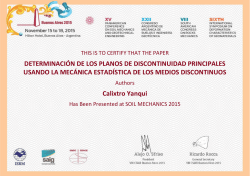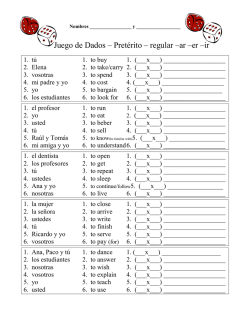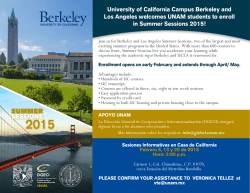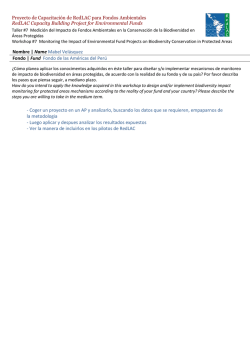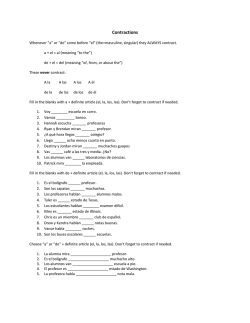
The full seminar programme, including paper abstracts, is
South American Archaeology Seminar: London 3rd December 2016 6th Floor Seminar Room Institute of Archaeology, UCL 34 Gordon Square, London WC1H 0PY Co. Sponsors: Pitt Rivers Museum: 1922.8.8 Nasca ceramic panpipe 9.30 am Coffee/ Registration 10.00 am. Sylwia Siemianowska (University of Warsaw, Poland) Investigaciónes sobre el material cerámico de Maucallacta, dep. Arequipa, Perú. 10.40: Christian Mesia Montenegro (Universidad San Ignacio de Loyola, Peru) Supra-household food consumption and sponsored feasts at Chavin de Huantar during the Late Andean Formative (900 – 550 BCE) 11.20 am Coffee/ Registration 11.40: Jimena Lobo Guerrero Arenas (University of Bristol, UK) Of people, objects and places. A multidisciplinary approach to the study of colonial metalwork in Santa Cruz de Mompox, Colombia 12.20: Viviana Siveroni (University College London, UK) and Mary Avila Peltroche (Universidad Nacional Mayor de San Marcos, Peru) The role of camelids in Late Prehispanic Huayuri (Palpa, Rio Grande de Nasca Drainage) Lunch 2.00: Anna Gruszczyńska-Ziółkowska (University of Warsaw, Poland) Entre la imagen y el sonido: Los instrumentos Nasca (antaras, tambores, trompetas y los silbatos) de Cahuachi. 2.40: Philip Riris (University College London, UK) Inferring the spatio-temporal boundaries of the Guaraní expansion into the La Plata basin Tea 3.50: Fernando Astete Victoria (Parque de Machu Picchu, Peru) Mariusz Ziółkowski (University of Warsaw, Poland) and Jacek Kościuk (Wroclaw University of Technology, Poland) Discovery of an Inca precise astronomical observatory at Inkaraqay (Machu Picchu, Peru) 4.30: Darryl Wilkinson (University of Cambridge, UK) The Archaeology of Inka Coca Production in the Eastern Cloud Forests Please register using the Eventbrite link below, which pays for your coffee, tea & lunch (£9.62, or a reduced rate of £5.37 for students) https://www.eventbrite.co.uk/e/south-american-archaeology-seminar-london-ucl-tickets-28888222451 Our next meeting will be on: Saturday 13th May 2017 If you would like to give a talk at a future seminar or for further information please contact Bill Sillar: [email protected] South American Archaeology Seminar: London ABSTRACTS: Resultados preliminares de la investigación sobre el material cerámico del Basural – 2. Maucallacta, dep. Arequipa, Perú. Sylwia Simianowska The Institute of Archaeology and Ethnology Polish Academy of Sciences The Center of Precolumbian Studies, University of Warsaw, Poland Centro de Estudios Andinos de la Universidad de Varsovia con una sede en la ciudad de Cusco (UNSAAC). [email protected] El gran antiguo centro administrativo-cultural y ceremonial de Maucallacta está situado en el distrito de Pampacolca, en la provincia de Castilla, departamento de Arequipa, en la altura promedia de 3.750 m n.p.m. Debido a la proximidad de la montaña sagrada de los Incas – Apu Coropuna, el lugar era visitado anualmente por miles de peregrinos procedentes de diferentes provincias del imperio Inca. Durante los varios años de excavaciones llevadas a cabo por el Centro de Estudios Precolombinos de la Universidad de Varsovia había sido descubierta una cantidad impresionante de frágmentos de cerámica. La mayoría de ellos ha sido descubierta en el Basural – 2, excavado durante las cuatro temporadas (2007-2009, 2011). Nuestra área de investigación se ubicó en la parte baja del Ushnu y al lado de la Plataforma I. En el Basural – 2, se encontró 72 882 piezas de cerámica que se caracterizan por un fuerte grado de fragmentación. Es imprescindible mencionar que este Basural contiene mas de 30% (?) del todo el material cerámico descubierto en el sitio de Maucallacta. Lo cual lo convierte en uno de los más grandes encontrados en el mundo andino. El propósito de este trabajo es presentar los resultados preliminares de la investigación sobre la cerámica del Basural–2. Supra-household food consumption and sponsored feasts at Chavin de Huantar during the Late Andean Formative (900 – 550 BCE) Christian Mesia Montenegro Universidad San Ignacio de Loyola, Lima, Peru [email protected] Supra household food consumption or feasts, have been understood as the locus of different types of interactions between various segments of the social sphere. Sponsored feasts at the supra-household level can provide information regarding the relationship between those who hosted the feasts and those who attended them. This paper presents evidence for supra-household feasts, retrieved from a large, stratified midden excavated at the site of Chavín de Huántar that dates to the Late Formative period (800-500 BC) in the Central Andes. I first analyze the formal characteristics of the midden deposits, and then examine variation in vessel types and frequencies, faunal remains, macrobotanical remains, narcotic paraphernalia, and exotic items. Finally, I discuss the implications of suprahousehold feasts in the context of Andean ceremonialism and power strategies during the Central Andes Late Formative period. South American Archaeology Seminar: London Of people, objects and places. A multidisciplinary approach to the study of colonial metalwork in Santa Cruz de Mompox, Colombia Jimena Lobo Guerrero Arenas University of Bristol [email protected] During the period following the Spanish conquest, the entangled relationship among individuals, objects and landscapes brought important changes into play, which in turn altered, re-signified, modelled and influenced the metallurgical activity. Metalwork during the pre-Columbian period was a material production filled with multiple symbolic meanings. Meanwhile, during the colonial period gold and silver work was produced and operated within a tensioned and contested landscape. Drawing on theories from Material Culture Studies and adopting a multidisciplinary approach that included archaeological evidence, documentary sources and ethnographic interviews this presentation will offer an overview on the results of my PhD research which was aimed at documenting and analysing what happened to metallurgy after the encounter. The study focuses on the town of Mompox, a World Heritage Site, in the Momposino Depression in northern Colombia. Here, a long-lasting metalwork tradition survives not only in the memories of the oldest goldsmiths but also in delicate silver filigree work. In this town, the interests of the Spanish Crown to establish control and the cultural responses of the mixed human group that formed the newly created colonial space together shaped a particular metallurgical landscape. This landscape served as a backdrop for goldsmiths to develop a craftwork that was characterized by anonymity, clandestinity, prestige, religious fervour and illegality. The role of camelids in Late Prehispanic Huayuri (Palpa, Rio Grande de Nasca Drainage): Artefactual, contextual and faunal evidence Viviana Siveroni Institute of Archaeology University College London [email protected] Mary Avila Peltroche Universidad Nacional Mayor de San Marcos, Lima, Peru [email protected] Recent research in the Andes is widening our understanding of past prehispanic camelid breeding and exploitation strategies. In this paper we would like to contribute to this topic by presenting contextual, artefactual, and faunal evidence from Ciudad Perdida de Huayuri, a Late Prehispanic domestic site (1470-1532 AD) in the coastal desert of Peru (Palpa, Ica, South Coast of Peru) to suggest a case of onsite breeding of cargo animals in the coastal desert. First, we use contextual and artefactual evidence to suggest camelids were bred on site —possibly at the household level— and were used as caravan animals. Second, we present the results of faunal analysis, in particular mortality curves, distribution of body parts and cut mark and modification patterns to reconstruct the modes of consumption and use. Finally, contextual and artefactual patterns are contrasted to discuss the role camelids had in the domestic economy of Late Prehispanic Huayuri. South American Archaeology Seminar: London Entre la imagen y el sonido: Los instrumentos Nasca (antaras, tambores, trompetas y los silbatos) de Cahuachi Anna Gruszczyńska-Ziółkowska Instituto de Musicologia, Universidad de Varsovia, Polonia [email protected] Los instrumentos Nasca (antaras, tambores, trompetas y los silbatos) especialmente los, que provienen del centro ceremonial (Cahuachi) pueden servir como los ejemplos de la ceramica de la mejor calidad. Seguramente interesante son sus aspectos decorativos. En muchos casos tienen caracter ambiguo, pero se lo descubre no por primera vista, sino despues de un momento del estudio mas profundo de la imagen. Igualmente los sonidos de los instrumentos: son variable, oscilantes, no estables, aunque la afinacion de los instrumentos es precisa y los aspectos acusticos son perfectos. En el uso de los instrumentos tan preparados se aplica un metodo (o mejor dicho, dos metodos a la vez – el sonoro y el visual)) inventado por los Nasquenses de provocar la maxima actividad de los sentidos y de intensificar los procesos cerebrales más avanzados. En el contexto de actividades rituales este tipo de percepción puede ser especialmente esperado. Mi presentacion basaria en el material empirico - los instrumentos exactos, provenientes de Cahuachi, estudiados por mi acústicamente. Inferring the spatio-temporal boundaries of the Guaraní expansion into the La Plata basin Philip Riris Institute of Archaeology, University College London [email protected] The Guaraní expansion into the La Plata basin is one of the major dispersal episodes of late South American prehistory. The short timeframe of the Guaraní expansion (2000 – 500 BP) during the late Holocene, as well as the relatively constrained spatial scale, both feature in the dominant explanatory paradigm for its occurrence, i.e. as the result of the migration of significant numbers of people in a classic “wave of advance”. We use a published database of georeferenced dates to model the spread of Guaraní sites from the beginning of the Common Era until the time of European contact at its known limits close to the La Plata delta and Atlantic coast of Brazil. We examine the dispersal as a function of time and distance in order to constrain the probable start dates for entry into different zones and implement methods to locate a probable point of entry into the basin. Additionally, we investigate the notion that Guaraní groups enveloped large sectors of terrain contiguously as the result of demographic pressures that were interspersed, as noted, with hiatuses of comparatively little movement. We place our findings in the context of preceding archaeological, ethnographic, and ethnohistorical knowledge on this dispersal process. Suggestions for further work to improve the scenarios we present are offered. We follow the note by Brochado (1984) that in the study of Guaraní archaeology, “computer modelling is probably the only way to achieve refined estimates of population growth” in the La Plata basin. South American Archaeology Seminar: London Discovery of an Inca precise astronomical observatory at Inkaraqay (National Archaeological Park of Machu Picchu, Peru) Fernando Astete Victoria Parque Arqueológico Nacional de Machu Picchu, Dirección Regional de Cultura Cusco [email protected] Mariusz Ziółkowski Centre for Precolumbian Studies, University of Warsaw, Poland [email protected] Jacek Kościuk Laboratory of 3D Scanning and Modelling, Faculty of Architecture, Wroclaw University of Technology, Poland [email protected] With the collaboration of César Medina Alpaca and José Bastante (Parque Arqueológico Nacional de Machu Picchu, Dirección Regional de Cultura Cusco) The paper is dedicated to a special category of structures that may be called ‘astronomical instruments’, constructed in the Inca Empire (ca 14 – 16 c. AD). As mentioned in some sources, these were intended for use by a small group of priests-astronomers. A good example is Intimachay in Machu Picchu, which was recently re-designated as an astronomical observatory, far more complex and precise than was previously believed. The discovery of Inkaraqay, a second structure, even more complicated than Intimachay and erected for the purpose of precise astronomical observation, confirms the importance of the knowledge of the skies in the running of the Inca Empire. The Archaeology of Inka Coca Production in the Eastern Cloud Forests Darryl Wilkinson Macdonald Institute University of Cambridge [email protected] With the exception of maize, no cultigen was more central to Inka statecraft than coca. Many of the most important prehistoric coca fields were located on the eastern Andean slopes, in the warm and densely vegetated yungas ecozone that lies between 1000 and 2000 metres above sea level - including the Amaybamba Valley, located some seventy kilometres northwest of Cuzco. This paper will therefore consider the archaeological evidence for the infrastructure that the Inka put in place in this region to facilitate the mass production and redistribution of coca leaf. In particular, the logistical scale of the infrastructure in question will be compared with pre-Inka efforts to access lowland products, as will the degree to which different ecological zones were integrated through such material networks. From this, it will be argued that the Inka coca system represented a major leap in the complexity of ancient Andean systems for the supply of psychoactive substances, and thus led to a significant intensification in state power.
© Copyright 2025
